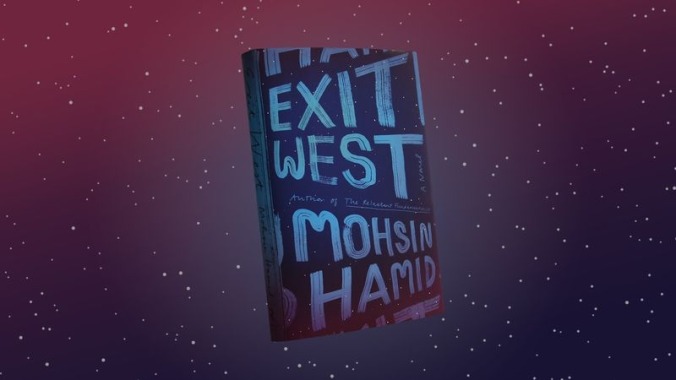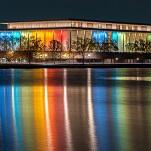Lyrical realism illuminates real immigration in the stunning Exit West

In an astonishing synthesis of political commentary and vivid imagery, Mohsin Hamid’s Exit West is a commanding yet fanciful outlook of the current climate of global immigration and international xenophobia, as told through the poignant love story of those caught in between. The story follows Saeed and Nadia, curious and drawn together through likeness and wonder, thrown into a domestic war between their reigning government and rebel forces. Saeed, spiritual and kind, finds Nadia mysterious and hidden, while she, secular and calculating, falls for Saeed’s tender words and softer touches. As their love and relationship grows, their city begins to crumble around them. Through indirect yet lyrical language, Saeed and Nadia’s home remains unclear throughout, but seemingly parallels that of the Taliban and ISIS involvement in the Middle East or Northern Africa. With this more transcendent feel to the novel, it relies heavily on equivocal but meaningful terms to narrate the underlining themes. It is as if to say it does not matter the “where” or “when” but rather the “how” and “whom.” Hamid’s point is not telling one story as he does, but rather Saeed and Nadia’s story could be that of many. They come from a city of war, destroyed, unrecognizable, and broken. And now, they move west.
They pay to leave through a door. With Saeed’s mother murdered and his father shattered by loss, the two find one of the many doors that have opened up throughout their home for a price. With the same beautiful and inexplicit rhetoric of their city, the imagery of the door and escape extends slightly to that of magical realism. “It was said in those days that the passage was both like dying and being born, and indeed Nadia experienced a kind of extinguishing as she entered the blackness…” In every escape, there is nothing more than entering and exiting through the shadow of a door. This is one of Hamid’s main identifying qualities in his writing. These doors hold power and are mystic and are more than desired. It reappears again and again, but is hardly elaborated further than a blackness that Saeed and Nadia tumble through. Hamid’s avoidance of any realism is deliberate and careful, but it never veers far from the very immediate and continuous danger the two must live through to escape. While there is immense beauty in the journey, there is never a lack of substance beneath it all.







































